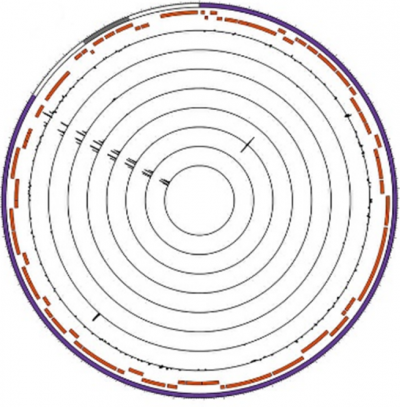Professor Judith Breuer (view research profile)
1. What is your role at UCL and what does it involve?
I am Co-Director of the Division of Infection and Immunity and Head of the Research Division of Infection. I am in charge of research and teaching strategy plus balancing the books etc. I am also a clinician two days a week at Great Ormond Street. I am still heavily involved in teaching, research and writing papers. I think it's really important that leaders remain research active and still teach.
2. Tell us about a project you are working on now.
My main interest is understanding how viral evolution impacts on public health and disease. An exciting project I'm working on at the moment is a Wellcome Collaborative Award studying norovirus. The pandemics occur every 2-5 years with a strain replacement. Like flu, this new strain escapes population immunity. However, unlike flu, antigenic changes are NOT driven by escape from population immunity. Instead we used phylogenetic tree sequences to reconstruct the virus and these showed that pandemic strains of norovirus actually circulate years before they start to spread pandemically. We don't know what triggers a pandemic, but our data suggests that it is changes in population immunity that create an immunological space into which the new pandemic strain can expand. The big question is where are potential new pandemic strains circulating before they emerge? We think that they are probably spreading among children. Since we don't routinely investigate causes of diarrhoea in children in the community, we don't really know what is out there.
3. What working achievement or initiative are you most proud of?
I am very proud of setting up the Cruciform Sequencing Unit (formally known as the Pathogen Genomics Unit) which is a unique and well-used facility and for helping create new technology for sequencing pathogen genomes.
From a scientific point of view, I am proud of my work with the Varicella zoster virus (the cause of chicken pox and shingles). We discovered the transcript that is associated with this virus can persist in the neurons of almost all adults, the VZV latency associated transcript (VLT). This ended 25 years of research during which no one was able to understand how VZV maintained dormancy. The finding is particularly important as we now have vaccines against VZV disease (chickenpox and shingles). However, almost all adults are latently infected so vaccination would need to go on forever. The VLT will allow us to understand the latency and may provide us with information that could lead to eradication of the latent virus as well.
4. In another life, what job might you have chosen?
A historian, I love history. But my parents were both chemists and were keen that I remain in science, so I studied medicine.
5. Who were your heroes when you were younger?
Simone de Beauvoir and Vera Brittain: two strong, independent women.
6. Which scientist(s) have you drawn the most inspiration from?
Edgar Hope Simpson. He was a GP in Cirencester in the 1950's and had a practice of around 3,000 patients. By tracking the health of these patients over 16 years, he was the first person to connect chickenpox to zoster (shingles). He hypothesised that past exposure to the virus boosts immunity and this has now been proven and has helped create the vaccine programme.
7. What is the best piece of advice you have received?
When I had my children, a female colleague told me not to work part-time when they were small but work from home one day a week instead. It can be very difficult going back full-time after being part-time so that was a really good solution.
8. What book would you most recommend to people?
Samuel Pepys' Diaries.
9. Who would be your dream dinner guests?
I am an insatiable reader and my guests would be the following authors: Elena Ferrante, Vikram Seth, Linda Grant, Arthur Schnitzler, Isaac Bashevis Singer, Nigel Slater and William Sutcliffe. They have all written books that speak to my personal experience and I would love to hear what they would say in conversation.
10. What is your favourite place?
Montegiorgio (Marche), Italy. It is near where my husband's family are from and we holiday there every year.
11. What would it surprise people to know about you?
I am really interested in architecture, all styles, and go to a lot of exhibitions.
12. What is your favourite microorganism and why?
Varicella Zoster Virus.
I became interested in it after looking after patients in hospital in East London, which has a large South-East Asian population. We noticed that there were a lot of adults with chickenpox which is unusual, as in temperate countries like the UK it is children who tend to contract chicken pox. In contrast, in tropical countries you are more likely to get it as an adult and as an adult, the symptoms are much worse. I went on to show that VZV transmission, which is by aerosolization from lesions, is impaired in tropical climates.

The VZV latency associated transcript
 Close
Close


